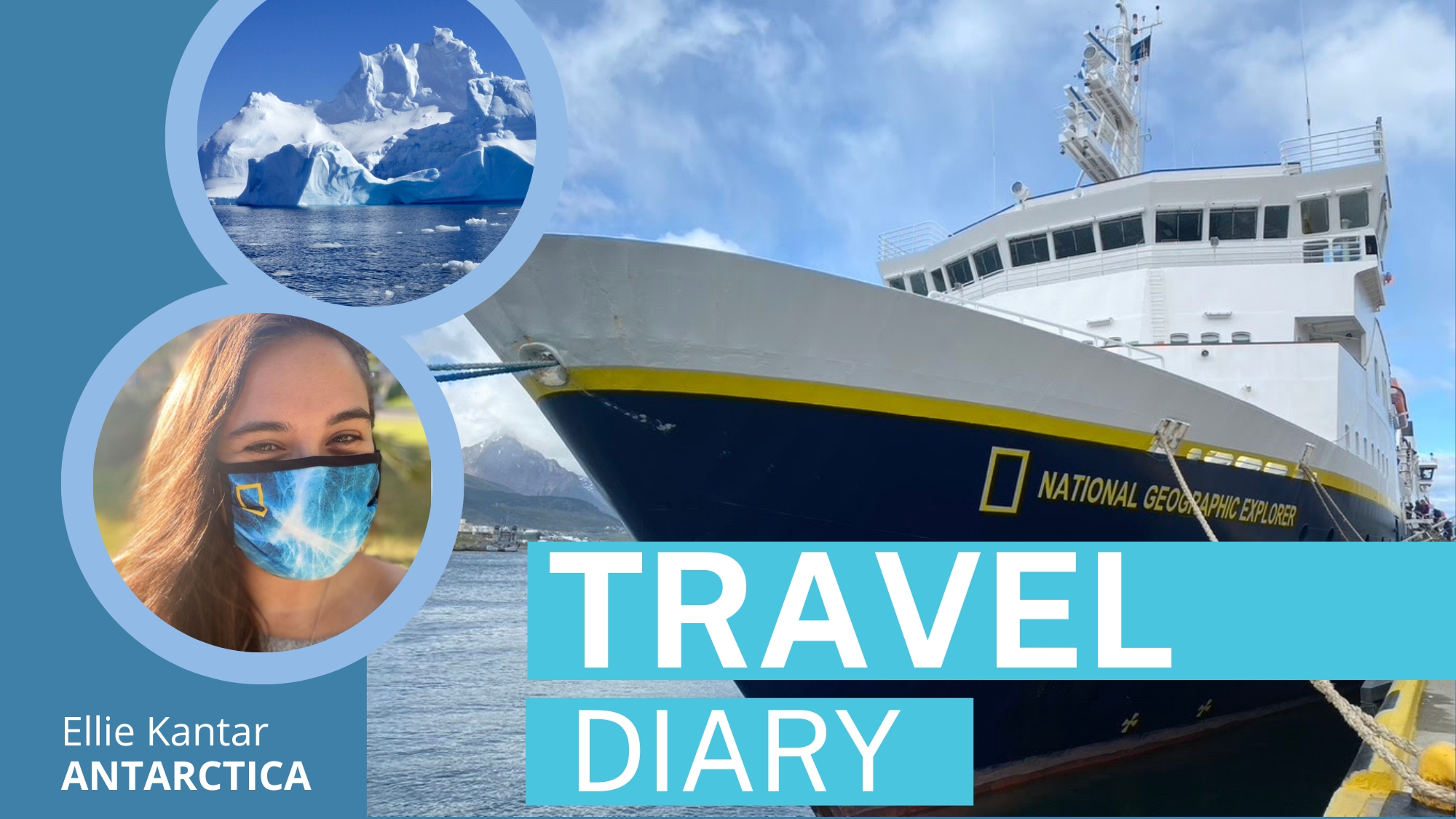Ellie Kantar travels to Antarctica as part of Grosvenor Teacher Fellowship
Posted: March 17, 2023
The following is a travel diary by Ellie Kantar, an English language learner (ELL) teacher at Farrington High School on Oʻahu. She was one of three Hawaiʻi teachers selected for the 2021 Grosvenor Teacher Fellowship. Due to the coronavirus pandemic, Kantar completed the voyage portion of her fellowship in November and December 2022.
Preparation
I first applied for the Grosvenor Teacher Fellowship in fall of 2019. The fellowship is a partnership between Lindblad Expeditions and the National Geographic Society. Through this two-year fellowship, teachers are provided a one-in-a-lifetime opportunity to travel aboard a Lindblad Expedition voyage to learn about and experience different parts of our amazing planet. Teachers then bring this experience back to their classrooms and communities by designing student projects and outreach events.
In February of 2020, I heard the incredible news that I had been selected as one of 50 fellows. We were scheduled to meet for onboarding at the National Geographic Headquarters in Washington D.C. at the end of March and expeditions were slated to begin in May. When the world shut down because of COVID, the fate of our fellowship was unknown. Thankfully, the team at both National Geographic and Lindblad Expeditions have always been, and continue to be, dedicated to education. With their hard work, two years later, I was finally able to embark on my expedition to Antarctica.
As an ELL teacher at Farrington High School, my ninth-grade ELL English classroom is filled with students from across the Pacific and Asia. When I first applied to be a Grosvenor Teacher Fellow, I spoke about wanting to make the world larger for my students. I wanted them to understand the impact they could make not only in our community or on our island, but in our world. Now, I had the opportunity to share with them somewhere so completely different from our home in Hawai´i.
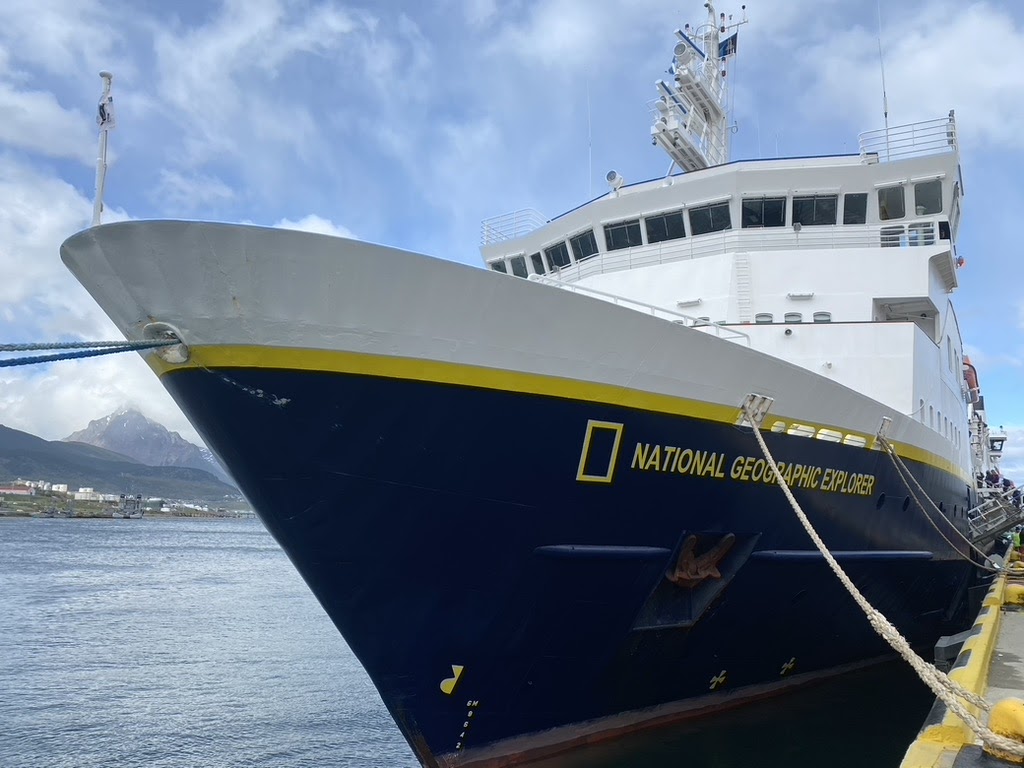
My first look at the National Geographic Explorer docked in Ushuaia, Argentina, on Nov. 29, 2022.
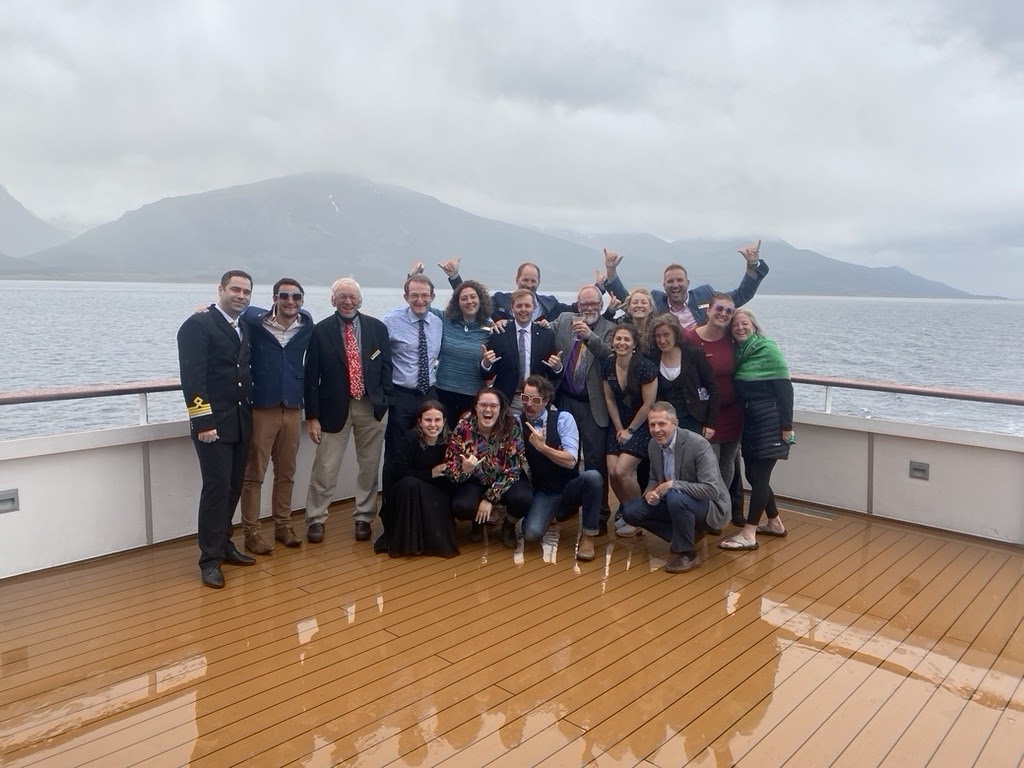
Some of our incredible naturalists and our ship captain, far left, before our final dinner aboard the ship on Dec. 8, 2022.
At Sea
The voyage itself was like nothing I have ever experienced. The itinerary flew me from Honolulu to Ushuaia, Argentina, with layovers in Dallas and Buenos Aires. After over 20 hours in the air and almost two days, I found myself standing in front of the National Geographic Explorer, my home for the next 10 days. The ship moved from Ushuaia through the infamous Drake Passage, where we were rocked by 35-foot waves, and finally took us into the Southern Ocean.
The voyage was an immersive education experience. This expedition had over a dozen naturalists from all over the world, and each day they would lead excursions and talks to teach us about all things Antarctica. Some days this meant riding a zodiac boat through fields of icebergs, bergy bits, and growlers or exploring the islands of the peninsula on land, walking through penguin colonies. Other days, they led short talks and longer lectures on the wildlife, the ice, the history, or the science of the Antarctic.
The naturalists fostered an environment of questioning, reflection, and discussion. I felt like a student again! Each excursion off the boat was like a field trip where I was able to learn something new and see it in real time with my own eyes. In the evenings, the naturalists would lead recap lessons to deepen our knowledge and help us see how each aspect of the Antarctic is connected. With each new experience and each new lesson, my curiosity grew. This expedition re-sparked my own love of learning, and each day I became more and more excited thinking of what and how to share everything around me with my students.
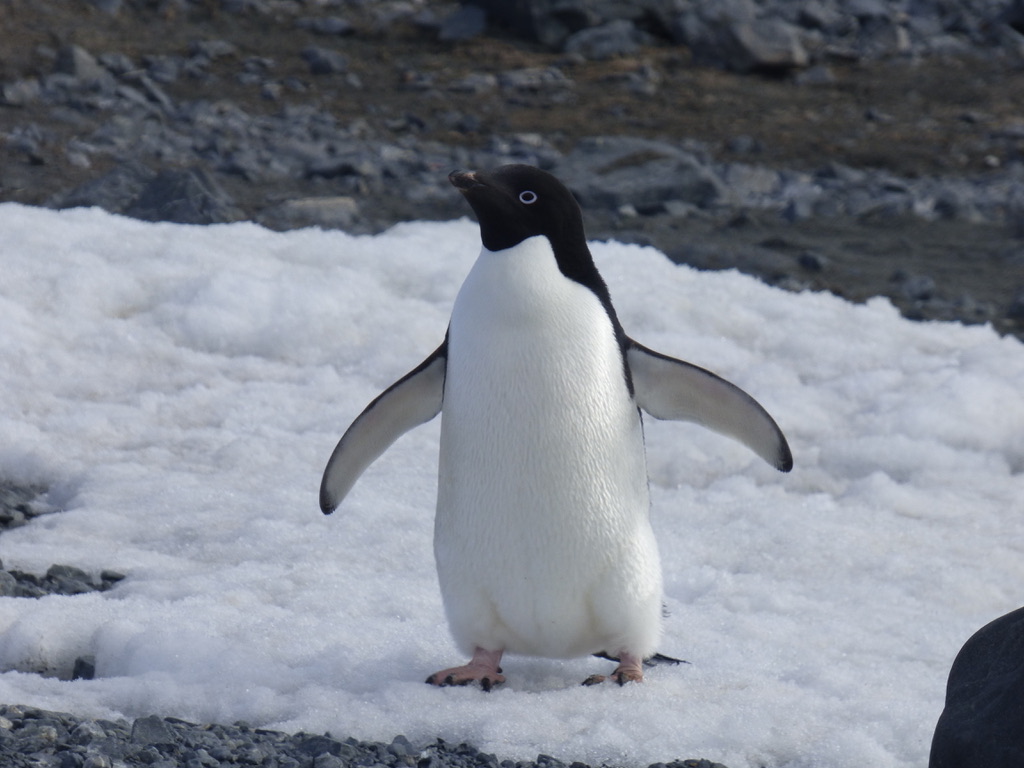
The moment I fell in love with Adelie penguins in the Danger Islands on Dec. 4, 2022.
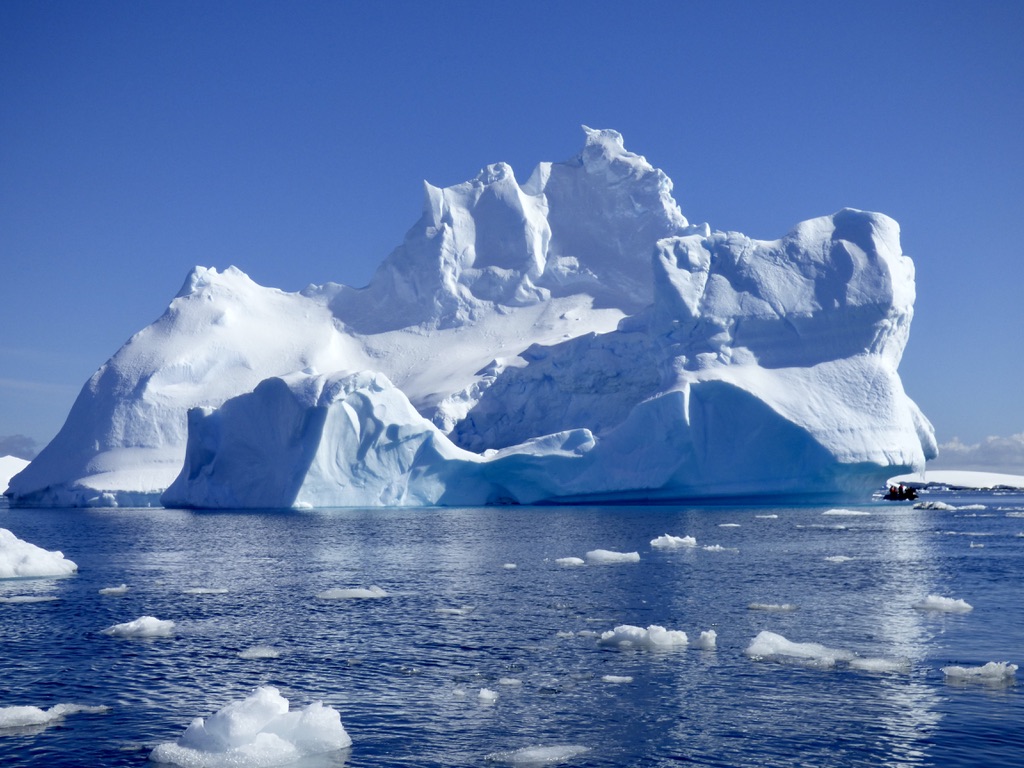
I spotted this giant iceberg in Port Charcot on Dec. 6, 2022. Look for a zodiac full of passengers in the bottom right for scale!
Back Home
Even now, months later, I find it hard to put into words the wonder of Antarctica. Although I couldn’t bring my students back a penguin like they requested, I was so excited to get back to school and begin sharing the magic I had experienced with them. Through stories, photographs, and videos, I was able to give students a window into my expedition. I shared with them the incredible, but sad, moment of seeing emperor penguins and how the only reason we were able to make it as far south as their colony was because the sea ice is melting, potentially forcing the juvenile penguins into the water before they are ready. I told them about jumping into the frigid Antarctic waters for the polar plunge, and we compared the monk seals we find here in Hawaiʻi to the Weddell seals I came across on the voyage. I spent an entire class period answering their questions, watching as one curiosity led to another, just like it did for me on the ship.
As a class, we studied exploration. We discussed why people explore, how they explore, and the impacts of exploration throughout history and today. We took our discussion of exploration to visual storytelling and how photographers tell stories and help people create relationships with places through the photographs they share. We analyzed photographs I took from Antarctica, and we analyzed visual stories by professional National Geographic photographers, like Camille Seaman, who I was able to learn from firsthand on my expedition. Ultimately, my students used these examples to then create their own visual stories of their special places. They created stories to not only share a place in the world that they love, but to change perspectives and help the audience create a connection with that place.
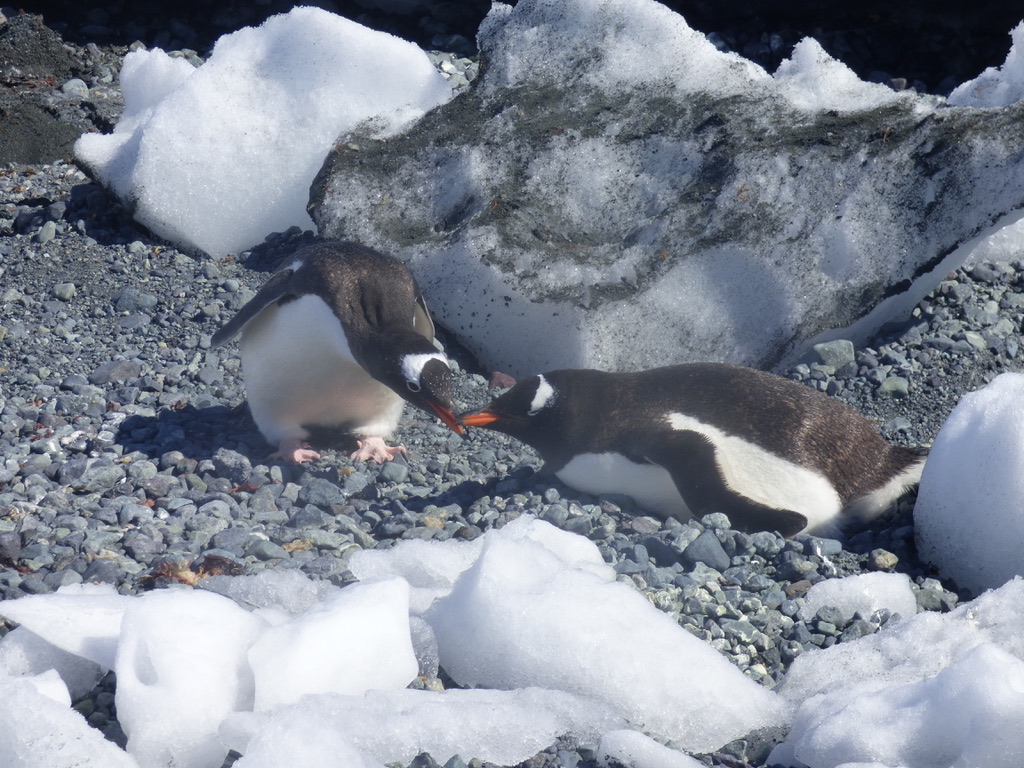
This photo, taken on Dec. 5, 2022, captures the caring relationship between a mating gentoo penguin pair. One partner lays on their egg while the other searches for and adds pebbles to their nest. It’s one of my favorite photos that I share with students.
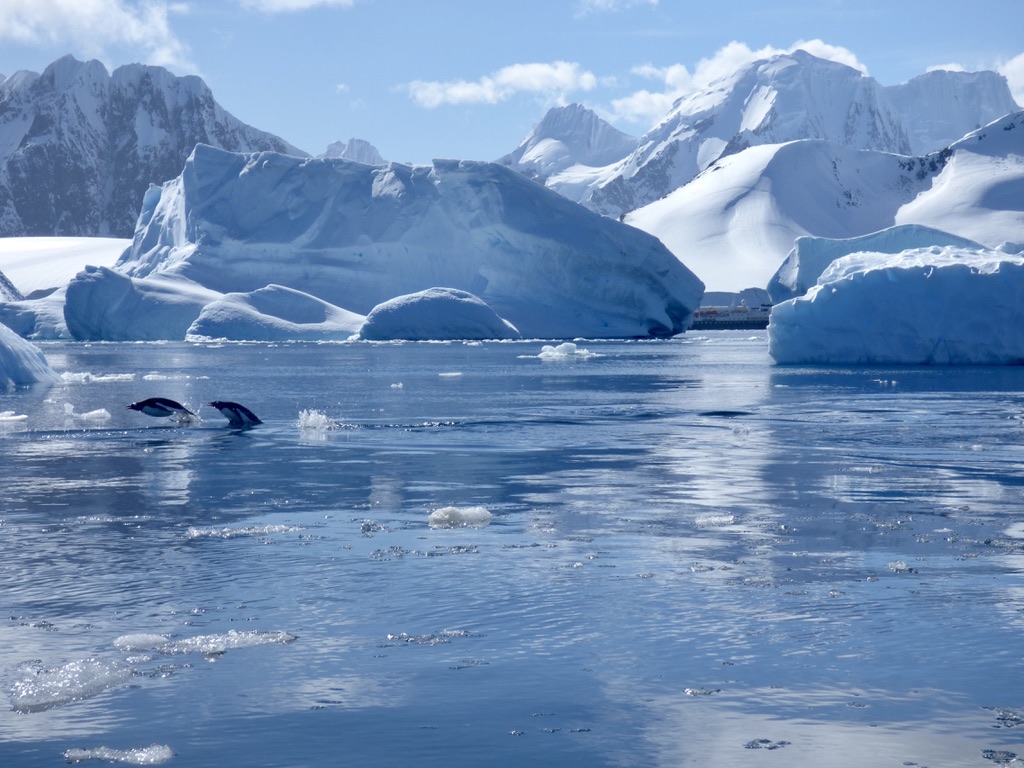
I took this photo on Dec. 6, 2022, our last official day in Antarctica traveling through the Lemaire Channel. In the distance, you can see the glacial capped mountains of the Antarctic peninsula. Just beyond the iceberg sits the Explorer, and there are even porpoising gentoo penguins to remind us of all the life that can be found here in this majestic, remote land.
What I Learned
This experience has reenergized my approach to professional development. It reminded me of the fun of learning and the importance of putting my own passion and energy in the content we cover in class. The expedition reinforced how deeply necessary it is to provide our students with experiences that not only show them the real world, but also help them build connections to the world around us. Through this expedition, I was able to see how our actions can have an impact across the world, in places I had never previously stepped foot in or even thought about. My hope is to use my experience to pass this same lesson on to my students — to show them that even from our small classroom at Farrington, they have the power to impact each other, our community, and our world. I want my students to carry this responsibility with honor and respect, and use it to make this world a better place.

